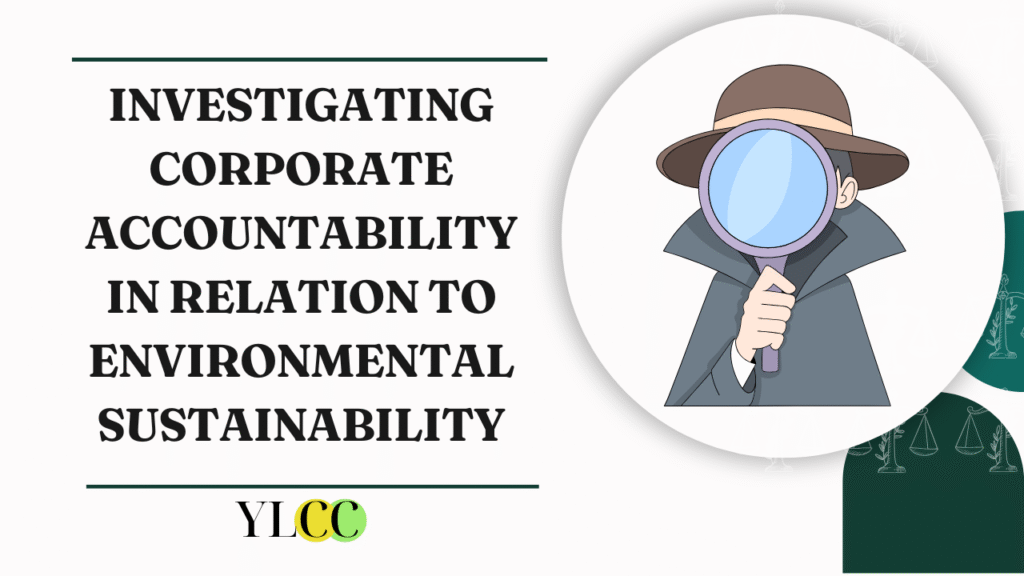
Current environmental trends are alarming. Thirteen million hectares of forests were lost in the last decade (2000-2010); 90% of water bodies have persistent toxic chemical contaminants; and it is projected that greenhouse gases will double in the next 50 years, leading to an increase in global surface temperature of 3 °C to 6 °C (2013). The World Bank estimates the annual cost of environmental degradation in India at 5.7% of the country’s GDP (World Bank, 2013). Environmental protection is an integral part of sustainable development, since the environment and development are linked through a complex system of cause and effect (Brundtland, 1987). Therefore, environmental degradation sources imply key importance in this regard, and companies have identified themselves as one of the important interested parties (others being consumers and the government) that influence environmental sustainability through their behavior (Shrivastava, 1995). Companies are considered the main engine of economic development (Shrivastava, 1995), employment (WBCSD, 2014), and have access to financial, technological, and institutional resources (Shrivastava, 1995). The process by which companies use “systems and practices to facilitate, maintain, and improve the quality of the long-term natural environment” is known as corporate environmental sustainability (Zoogah, 2014, p. 58). Commitment to corporate social responsibility (CSR) can initiate and even accelerate the process of guaranteeing environmental sustainability (Berkhout, 2005). This is because companies that participate in activities related to the protection of the natural environment as part of CSR consider the environment as one of their interested parties and concern areas (Blowfield and Frynas, 2005; Burke, 2005; Roeck and Delobbe, 2012), along with employment and human rights (Gillis and Spring, 2001). Public policies in developed nations have already considered the multiple interested parties of CSR. However, developing policies are still evolving, as CSR is less formalized and more philanthropic (Jamali and Karam, 2016). For example, CSR spending in Indonesia was ordered in 2007 (Waagstein, 2011), while CSR reporting in China became mandatory for companies listed on the Shanghai and Shenzhen exchanges in 2008 (Hung, Shi, and Wang, 2013). CSR spending in India has been mandatory for 2% of select companies under the Companies Act, 2013 (MCA, 2013).
In India, the issue of holding corporations accountable for environmental damage is of great importance due to the intricate environmental problems of the nation and the significant influence of corporations on environmental outcomes. This study critically evaluates the legal principles that govern corporate responsibility for environmental damage in India. It examines the current legal structure, including key laws such as the 1986 Environment (Protection) Act and the 2013 Companies Act, and analyzes notable judicial cases to trace the development of environmental law and its impact on corporate responsibility. The study also identifies obstacles and criticisms regarding the effective application of corporate responsibility laws and performs a comparative analysis with global legal principles to identify potential areas for improvement. Based on these findings, the study provides recommendations for strengthening the legal framework and improving corporate responsibility for environmental damage in India.
Corporate responsibility for environmental damage in India covers a wide range of perspectives, underlining the complexity of the problem. Academics have thoroughly analyzed the development of environmental laws and regulations in India, emphasizing the influence of statutes such as the Environment (Protection) Act of 1986 and the 2013 Companies Act on corporate behavior towards the environment. Numerous studies have highlighted the inherent difficulties in enforcing corporate responsibility laws efficiently, identifying concerns such as lenient application mechanisms, insufficient sanctions, and bureaucratic obstacles. Ramaswamy vs. Chidangil (2016) argued that although India has taken substantial measures to formulate environmental legislation, the execution and application of these laws remain weak, perpetuating continuous environmental deterioration. Additionally, academics have delved into significant judicial cases that revolve around corporate responsibility for environmental damage, judicial decisions, and their implications for corporate responsibility. For example, historical cases such as the Bhopal Gas Tragedy and the Citizen Welfare Forum of Vellore case played fundamental roles in shaping public discourse and legal interpretations regarding corporate responsibility. Furthermore, comparative studies with international legal principles have offered valuable insights into the necessary reforms to strengthen India’s regulatory framework regarding corporate responsibility. Kolk (2007) emphasized the importance of harmonizing India’s environmental laws with global standards to reinforce corporate responsibility and advance sustainable development objectives. Literature emphasizes the pressing need for reforms to close the gap between legal principles and their practical implementation regarding corporate responsibility for environmental damages in India. Through a meticulous synthesis of current research, this study strives to contribute to the ongoing dialogue on corporate environmental responsibility and governance in India.
India’s framework for governing corporate responsibility for environmental damage includes several statutes and regulations, each playing a crucial role in the formation of environmental governance:
- Environment (Protection) Act, 1986: The Environment (Protection) Act, 1986 is fundamental in India’s environmental legislation. It grants authority to the central government to institute measures aimed at safeguarding and improving the environment. This legislation forms the legal basis for supervising activities that may have environmental repercussions, such as industrial operations, hazardous substances management, and conducting environmental impact assessments.
- Companies Act, 2013: The Companies Act, 2013 plays an important role in the corporate landscape of India, particularly regarding environmental sustainability and corporate social responsibility (CSR). Section 135 of this law requires certain classes of companies that meet specific financial criteria to allocate a part of their profits toward CSR activities. These activities can cover initiatives related to environmental conservation and development, among other social causes.
- Water (Prevention and Control of Pollution) Act, 1974: The Water (Prevention and Control of Pollution) Act, 1974 is a cornerstone in India’s efforts to combat water pollution. This legislation addresses issues related to water pollution by establishing mechanisms for prevention and control. Regulatory authorities are empowered under this law to establish standards for effluent discharge and regulate industrial activities that could negatively affect water quality.
- Air (Prevention and Control of Pollution) Act, 1981: The Air (Prevention and Control of Pollution) Act, 1981 reflects the Water Act in its objective to address environmental concerns, particularly air pollution. This legislation aims to prevent and control air pollution by granting regulatory authorities the authority to prescribe emission control standards. It also allows for the regulation of industrial processes contributing to air pollution, ensuring measures are in place to safeguard air quality.
- Forest (Conservation) Act, 1980: The Forest (Conservation) Act, 1980 is instrumental in regulating the use of forest lands for non-forest purposes in India. Its main objective is to conserve forest resources by controlling the diversion of forest lands. This legislation requires prior approval from the central government for any activity that involves diverting forest lands for non-forest purposes, ensuring careful consideration and forest resource management.
- Environmental Impact Assessment (EIA) Notification, 2006: The EIA Notification, 2006 is a crucial regulation in India’s environmental governance framework. It requires the evaluation of potential environmental impacts resulting from proposed development projects before their initiation. The EIA Notification establishes detailed procedures for conducting environmental impact assessments (EIA) and obtaining environmental clearances for projects. By requiring thorough assessments and clearances, the EIA aims to ensure that development activities are carried out sustainably, minimizing adverse environmental impacts.
- Wildlife Protection Act, 1972: The Wildlife Protection Act, 1972 is foundational to India’s efforts to preserve and safeguard wildlife and habitats. This act regulates activities that could pose threats to wildlife and ecosystems, such as hunting, poaching, and habitat destruction. It aims to guarantee the sustainable management and conservation of India’s rich biodiversity.
Certainly, each of these legal guidelines plays a specific and essential role in addressing various aspects of environmental protection and governance in India. Together, they form the legal framework for corporate responsibility for environmental damage, ensuring that companies are accountable for their environmental impacts. These laws empower regulatory authorities to establish standards, test, and enforce policies to mitigate environmental damage caused by corporate activities. By addressing issues such as air and water pollution, deforestation, wildlife conservation, and sustainable development, these legal guidelines contribute to promoting environmental management and sustainable corporate practices in India.
Criminal Standards Governing Corporate Responsibility for Environmental Damage in India
- Bhopal Gas Tragedy (Union Carbide Corporation v. Union of India): The 1984 Bhopal gas tragedy stands out as one of the most catastrophic industrial disasters worldwide, resulting from the toxic discharge of methyl isocyanate gas from a pesticide plant operated by Union Carbide Corporation (UCC). The disaster caused hundreds of deaths and severe injuries, with long-term health effects on countless others. In the aftermath of this tragedy, significant litigation occurred, with victims seeking compensation and holding UCC accountable for the environmental and human health consequences. This case played a pivotal role in shaping India’s environmental jurisprudence, establishing the principle of “absolute legal responsibility” for hazardous activities. The Supreme Court argued that UCC, as the plant operator, had strict liability for environmental damage caused by the gas leak, regardless of fault or negligence. The case underscored the importance of holding companies accountable for environmental failures and highlighted the need for strict regulatory measures to prevent future incidents.
- Vellore Citizens Welfare Forum v. Union of India: In this case, which concerned environmental pollution in Vellore District, Tamil Nadu, residents raised concerns about contamination from industrial units operating in the area. The petitioners sought judicial intervention, alleging violations of environmental laws and regulations by these industries. In its ruling, the Supreme Court reiterated the constitutional right to a clean and healthy environment and emphasized the principle of “polluter pays.” The Court ruled that industries could be held liable for environmental damage, even if they were not directly responsible for causing it. This decision broadened the scope of corporate liability and emphasized the importance of preventive measures and environmental compliance by industries.
- M.C. Mehta v. Union of India (1986): This landmark case, commonly known as the Oleum Gas Leak case, centered on an oleum gas leak from a factory in Delhi, which caused harm to nearby residents. In its judgment, the Supreme Court emphasized the principle of “strict liability,” ruling that industries involved in hazardous activities were strictly responsible for any damage caused to the environment or public health, regardless of fault or negligence.
- M.C. Mehta v. Union of India (1996): In this case, concerning the contamination of the Ganges River, the Supreme Court issued comprehensive directives to address pollution and restore water quality in the river. These directives included the closure of polluting industries and the establishment of wastewater treatment plants. The ruling highlighted the Court’s proactive role in enforcing environmental laws and holding polluting industries accountable for environmental degradation.
- Indian Council for Enviro-Legal Action v. Union of India (1996): In this case, commonly known as the “Taj Trapezium Case,” the Supreme Court addressed pollution generated by industries near the Taj Mahal, a UNESCO World Heritage site. The Court issued directives to mitigate pollution in the Taj Trapezium zone, emphasizing the importance of protecting both environmental and cultural heritage. This case highlighted the interconnectedness of environmental conservation and cultural preservation and reinforced the obligation of industries to operate sustainably to protect iconic landmarks like the Taj Mahal.
- Sterlite Industries (India) Ltd. v. Union of India (2013): This case revolved around the closure of a copper smelting plant operated by Sterlite Industries in Tuticorin, Tamil Nadu, due to environmental violations and public protests against pollution. The Supreme Court upheld the closure order issued by the Tamil Nadu Pollution Control Board, emphasizing the importance of environmental compliance and affirming the right of citizens to a clean environment.
- Alembic Chemical Works Co. Ltd. v. Union of India (1989): In this case, the Supreme Court held a pharmaceutical company responsible for water pollution caused by its effluent discharge. The Court emphasized the principle of “polluter pays” and ordered the company to compensate for the environmental damage. This case underscored the importance of strict regulatory oversight and corporate responsibility to prevent industrial disasters and protect public health and the environment.
- Vedanta Limited v. State of Tamil Nadu (2021): In a recent ruling, the Madras High Court upheld the closure order issued by the Tamil Nadu Pollution Control Board against Vedanta Limited’s copper smelting plant in Tuticorin, Tamil Nadu. The Court cited environmental violations and public health concerns raised by residents as grounds for the closure. This ruling reaffirmed the importance of environmental compliance and emphasized the right of affected communities to a clean and healthy environment.
Judicial decisions have played a crucial role in shaping corporate responsibility for environmental damage in India. By establishing important legal precedents, these cases have underscored the necessity of robust regulatory mechanisms and effective enforcement of environmental laws. They have stressed the need to hold corporations accountable for their actions and ensure they adhere to environmental standards to protect both the environment and public health. These judicial interventions serve as vital checks and balances, contributing to the advancement of environmental justice and sustainability in India.
Conclusion
The promotion of public participation, international cooperation, and the incorporation of environmental considerations into policy formulation processes are essential to achieving the overarching goal of sustainable development. By adopting a holistic and integrated approach that balances economic growth with environmental conservation and social equity, India can pave the way for a greener and more sustainable future. Effective environmental governance requires collaboration and collective action from governments, corporations, civil society, and citizens to guarantee the well-being of both people and the planet. With a renewed commitment to environmental stewardship and a strong legal framework prioritizing corporate responsibility and environmental protection, India can overcome existing challenges and emerge as a global leader in sustainable development.
This article has been written by Kirti Sharma. For any other queries, reach out to us at: queries.ylcc@gmail.com






